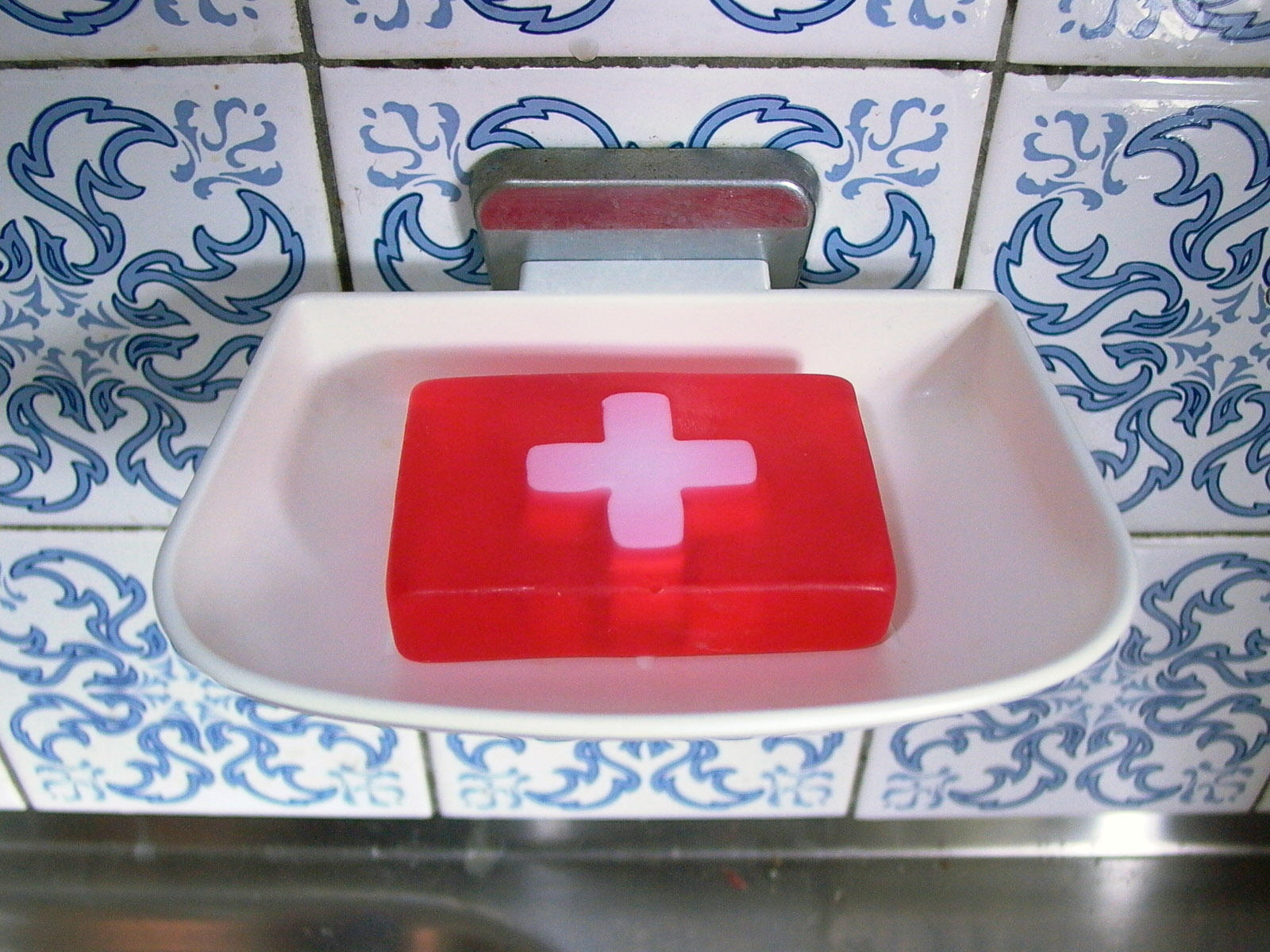Swiss flag “remixed” in Big Apple

In New York just about everyone is desperate for attention, and the Swiss Institute of Contemporary Art is no exception.
Unable to resort to colourful tattoos, excessive facial hair or just plain loudness, the Swiss Institute has chosen to “remix” the Swiss flag as a way to stand out.
“Broadway is so long and people don’t really know where the Swiss Institute is, so it’s a way to orientate visitors,” said Gianni Jetzer, director of the Institute.
Jetzer is referring to the latest version of the Swiss flag that now hangs above the gallery he runs in the fashionable Soho district of Manhattan.
When he became head of the gallery in 2006, Jetzer took down the Swiss flag that hung outside and decided to start all over again.
So far he’s commissioned three artists to come up with their own version of the flag, each hung in succession.
Beyond Heidi
“It’s like famous musicians or bands asking other famous musicians or bands to remix their albums. It’s still their track but it’s different, it’s refreshed – and that’s the same goal with this flag,” Jetzer told swissinfo.
He wants the flags to represent postmodern Switzerland, which he said is “much more complex than just Heidiland”.
“I think the nice symbolic value of it is that we try to question Switzerland and communicate it to the outside world,” he said.
The latest incarnation of the flag comes from the Swiss artist Peter Regli.
Regli has taken the Swiss cross and “shattered it”, according to Jetzer. “The image clearly looks like a face, but it’s not really a smiley face,” Jetzer said.
Many people outside the gallery agreed. “I think it’s a type of smiley, but not a happy one. It screams,” said Anna Brankovich, 19, visiting New York from Basel. She added that the flag was “cool”.
Regli himself won’t comment on his artwork.
Rorschach
But a number of people – perhaps desperate for optimism in a time of economic gloom – saw a smile nevertheless.
“It’s kind of funny looking – like two eyes with smile,” said Chris Alderson, 45, from Kentucky.
Billy Morrissette, 46, who lives in the neighbourhood, saw inebriation. “It looks like a drunk person.” When asked which country the flag might be affiliated with, Morrissette concluded: “Let’s think of drunk countries – Germany or Ireland? I see Ireland.”
A clear sign of Switzerland seemed to be absent in the flag, but few people actually knew the real Swiss flag. Nicole Taylor, 25, thought there could be a pharmacy symbol, while Morrissette speculated it might be cheese.
Morrissette, like everyone else, only recognised the flag – and the Swiss Institute – once it was pointed out. “I walk this block every day and I’ve never noticed it,” he said.
What might grab his attention? “They should dress a woman in folksy Swiss clothing and have her wear a big card on her chest that says ‘Swiss Institute’,” Morrissette suggested helpfully.
Heidi, in other words.
swissinfo, Karin Kamp in New York
Peter Regli’s flag will hang outside the Swiss Institute in New York City until August 31, 2009.
The previous flag was produced by Olivier Mosset, who wanted to merge “the Communist flag with the Swiss cross and hang it on Broadway”.
Olaf Breuning designed the first flag, which reminded Jetzer of a “friendly little ghost.”
1339: At the Battle of Laupen, Swiss Confederation troops wear a long-armed, narrow, white cross on their breasts, sleeves and thighs as a common recognition sign.
1815: After the fall of Napoleon, Swiss regiments became border troops with the prototype of a modern federal flag: a long, narrow, white cross on a red field.
1840: The legislative assembly rules that the federal flag will replace cantonal war flags for all of Switzerland’s armed forces.
1848: The flag is enshrined in the Constitution of 1848, which in effect transforms Switzerland into a federal state.
1889: Parliament changes the cross from having five equal squares to the arms being one-sixth longer than they were wide.
2007: Government standardises shade of red in the flag.

In compliance with the JTI standards
More: SWI swissinfo.ch certified by the Journalism Trust Initiative














You can find an overview of ongoing debates with our journalists here . Please join us!
If you want to start a conversation about a topic raised in this article or want to report factual errors, email us at english@swissinfo.ch.